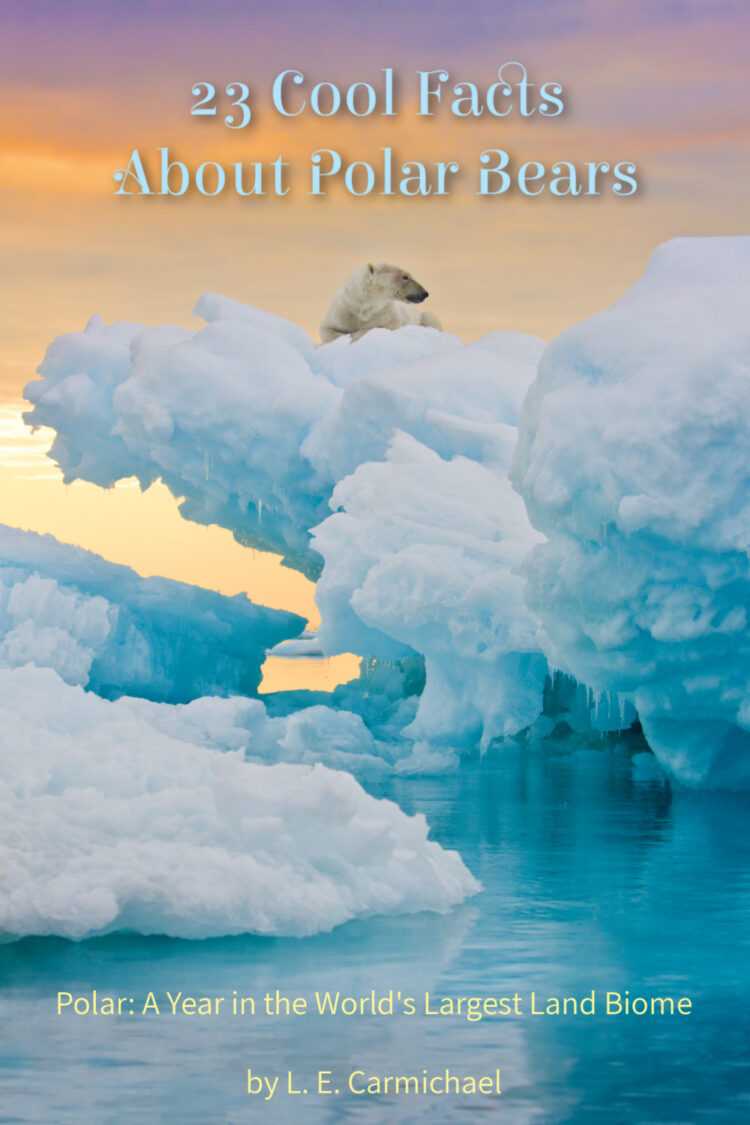 It’s International Polar Bear Day! Since it’s 2023, I’ve rounded up 23 cool facts about these icons of the Arctic, including a surprising discovery I helped make during in my former life as a wildlife geneticist. Is your favourite fact missing from this list? Feel free to add it in the comments!
It’s International Polar Bear Day! Since it’s 2023, I’ve rounded up 23 cool facts about these icons of the Arctic, including a surprising discovery I helped make during in my former life as a wildlife geneticist. Is your favourite fact missing from this list? Feel free to add it in the comments!
Basic Bear Biology
1) The polar bear’s closest relatives are brown bears — specifically, the ones living in Siberia.
2) Polar bears are terrestrial (land-based) animals that play a large role in marine (ocean) ecosystems. Marine biologists classify them as fissipeds (split foots) because, unlike true marine mammals with flippers, bears still have separated toes!
3) Polar bears can live up to 32 years.
4) Females weigh up to 700 pounds; males up to 1300.
5) Their paws are up to 30 cm wide, creating natural snowshoes that help spread their body weight over snow and ice.
Habitat
6) Polar bears are sometimes found on multi-year ice (sea ice that stays frozen over the summer) but prefer “fresh” ice that forms each winter, because that’s where most of the seals are.
7) In areas where the ice melts in summer, bears move onto land.
8) Wrangel Island (off the northeast coast of Siberia) has the highest density of polar bear dens in the world.
Food
9) While denning and raising her cubs, a female polar bear can go up to 8 months without food.
10) Ring seals are polar bears’ favourite food, but they will eat anything they can catch.
11) They don’t catch seals often! One study of polar bears in Svalbard estimated that seal hunts succeed less than 9 percent of the time.
12) Adult walruses are too big for most polar bears to catch. But on Wrangel Island, bears may rush beached walruses to create a stampede. The bears can then eat any animals that were injured in the panic.
13) Arctic foxes often follow polar bears, hoping to scavenge from the bear’s kills. It’s a dangerous strategy, as polar bears sometimes eat the foxes!
14) Polar bears have been found in the stomaches of Greenland sharks! Those sharks had also eaten a lot of species found on the sea floor, suggesting they scavenged on a polar bear carcass, rather than attacking a live bear.
Movement
15) In 2006, a Greenpeace expedition spotted a polar bear within one mile of the North Pole! It was over 550 miles from the nearest land.
16) Scientists use radio collars to track the movements of female polar bears. One bear traveled from the Beaufort Sea in Alaska to Northern Greenland. In total, she travel 7162 km over 576 days.
17) Scientists can’t use radio or GPS collars to track male polar bears — their necks are thick and their skulls are narrow, so the collars slip right off!
Surprising Science
18) Polar bear fur helps prevent the bear’s body heat from escaping into the cold Arctic air.
19) Polar bear hairs are full of microscopic pockets of air. Their fractal structure not only conserves body heat, it absorbs heat energy from the bear’s environment!
20) When I was a graduate student, bear biologists in Nunavut found a female polar bear whose private parts looked a little bit more like a male bear’s. In all the years they studied her, the bear never gave birth to a cub. I performed DNA testing on a sample of her blood and discovered she had at least part of a Y chromosome in her genome. This genetic anomaly might have been the reason that she was unable to reproduce.
Climate Change and Conservation
21) There are between 22,000 and 31,000 polar bears world wide.
22) The International Union for the Conservation of Nature listed polar bears as Vulnerable in 2015. Species listed as Vulnerable could become Threatened or Endangered if we don’t do something to protect them.
23) The greatest threat polar bears face is the loss of Arctic sea ice due to ongoing climate change.
There are lots of things you can do to help protect polar bears, ranging from donating to conservation organizations to reducing your carbon footprint. You can even raise awareness by sharing your favourite polar bear facts on social media – use the official hashtags #InternationalPolarBearDay and #PolarBearDay
Reminder that I’m booking Polar-themed school visits for May and June – contact me if you’re interested in learning more.
I’m also scheduling a number of book launch events that will be open to the public. Click here for the full schedule – I’d love to see you!